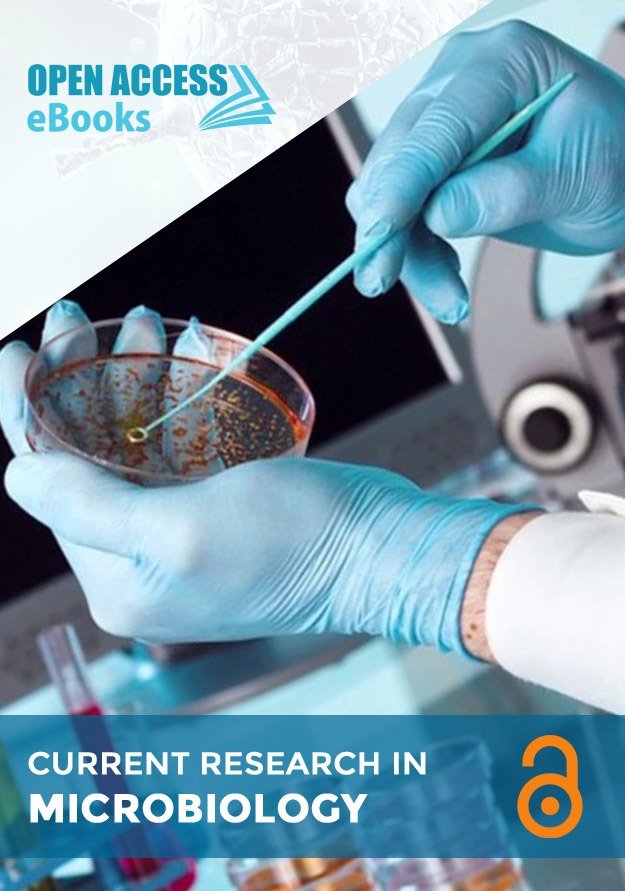List of Chapters
Development of Drug Resistant in Microbes and Therapeutic Antimicrobial Activity of some Medicinal Plants and their MetaboLites: Current Status
Author(s): Mahmood Ahmad Khan; Mohd Jahir Khan*; Abrar Ahmad; Qamre Alam; Anjum Bee; Mohammad Kashif; Mahboob Ahmad; Md Salman Akhtar
There has never been much requirement of broad, well-researched information about herbs' as prospective to fight against infection. Pathogenic microbes have frequently been considered as a global threat due to development of drug resistance that significantly restricts the efficiency of currently used antimicrobial drugs. Therefore, Researchers had work continuously to find some breakthrough regarding treatment of drug resistant microbes and they added to the growing body of knowledge about herbs. Herbs are used secondary metabolites with different a biological function that produce wide range of activity to enhance immune system of human body and inhibits the growth of microbes, can serve as source for the synthesis of new antimicrobial drugs, especially against antibiotic resistant bacteria.
Microbial Thermo-Tolerant and Solvent- Tolerant Lipases and their Applications
Author(s): Abhishek Sharma; Khem Raj Meena; Shamsher Singh Kanwar*
Lipases are the preeminent option(s) for organic chemists because of some common issues of interest such as simplicity of handling, broad substrate acceptance, high stability towards temperatures as well as organic solvents and convenient commercial availability. Moreover, easy amenability of lipases to many matrices for their immobilization has added to their extensive attractiveness among organic chemists. Thermo-tolerant lipases that remain folded and functional at high temperatures besides other environmental conditions such as hydration state, pH or ion concentration have natural advantages to be employed in stringent thermal and solvent conditions for biotransformation reactions and organic syntheses. Lipases show immense flexibility of their catalytic behaviour but the need persists for suitable non-aqueous and safe solvents for use in the reactions. The adaptation displayed by microbial thermophilic/thermo-tolerant and/or organic solvent tolerant lipases can be exploited in many fields, including pharmaceutical, medicine, environment, food, agriculture and biochemical synthesis.
Surface Culturing of Chromobacterium Violaceum MTCC 2656 for Violacein Production and Prospecting its Bio-Activities
Author(s): Vinod Kumar Nathan*; Subha Rajam K; Mary Esther Rani; Gunaseeli Rathinasamy; Narayana DhriviamKannan
Chromobacterium violaceum MTCC 2656 is a gram negative, facultative anaerobic, non-spore forming bacterium known for its ability to produce violacein, an indole derivative pigment. The pigment violacein was found to possess many potential activities including antimicrobial, anti-cancerous, trypanocidal and antiviral activity. In the present work, effect of carbon sources on pigment production was tested with dextrose, sucrose, lactose and xylose. Pigment production was most favoured in nutrient broth supplemented with 1% dextrose as carbon source when incubated in orbital shaker at 150 rpm for 3 days at room temperature.
Resistance Strategies against Microbial Plant Pathogens
Author(s): Irfan Ali; Muhammad Sarwar Khan; Ghulam Mustafa; Neelam Sultan; Zafar Iqbal; Muhammad Shafiq
Major phytopathogens include viruses, fungi and bacteria, which cause significant losses to the varieties of plants esp agroeconomical crops. Main causes of infection in plants are viruses, fungi and bacteria. These Plant pathogens are among the most significant challenges and causing severe damages especially to crop plants. Recent developments in the genetic engineering techniques and advancements in the understanding of plant defense mechanism have enabled the scientist to devise better strategies at the molecular level against plant pathogens additional to classical breeding tools or chemical control.
Tobacco rattle virus-A pathogen Based Vector System as a Tool for Functional Genomics
Author(s): Sahil Mehta*, Shambhu Krishan Lal, Panditi Varakumar, Dhirendra Fartyal, Malireddy K Reddy
In this era of genomic research, it has become highly important to understand the mechanisms by which plant genes are influenced and respond to their immediate environment. However, dissecting these crucial mechanisms is a challenge in many non-model and crop plant species due to the unavailability of reliable genetic transformation protocols. Virus-Induced Gene Silencing (VIGS) has emerged as the most suitable alternative approach to bypass these processes as it does not require any stable transgenic lines. Among various VIGS systems developed till date, Tobacco Rattle Virus based Induced Gene Silencing (TRV-VIGS) is the most extensively preferred one. It has been frequently used in many members of Solanaceae, Rosaceae, Brassicaceae, Euphorbiaceae, Apocynaceae, Amaranthaceae and some other plant families to study the plant–pathogen and plant-herbivore interactions, evolution and various plant developmental processes.
Drug Resistant Mycobacterium tuberculosis
Author(s): Parthiban Brindha Devi
Mycobacterium tuberculosis (Mtb) is a causative agent for the deadly pathogenic disease Tuberculosis. It was said earlier that around 10 million of new cases are being infected with tuberculosis [1]. This implies that there is minimizing in the treatment of tuberculosis. This is mainly due to the resistant strains being developed by the bacteria and the various forms of diseases have developed due to its resistance form. Tuberculosis is an air born infection which is highly transmitted by aerosol. In recent years, Tuberculosis caused by Mtb is emerging in a very faster rate by its resistant strains.
Editors:
1. Dr. Balayogan sivasankari
2. Dr. Geizecler Tomazetto
3. Dr. Mansi Verma
